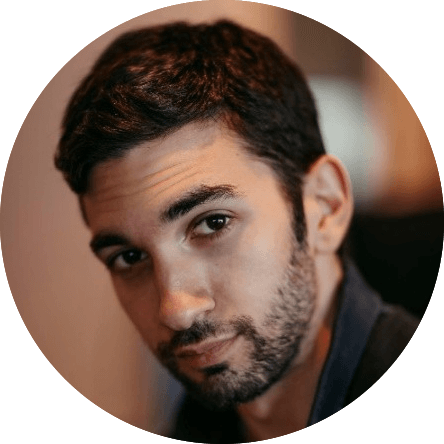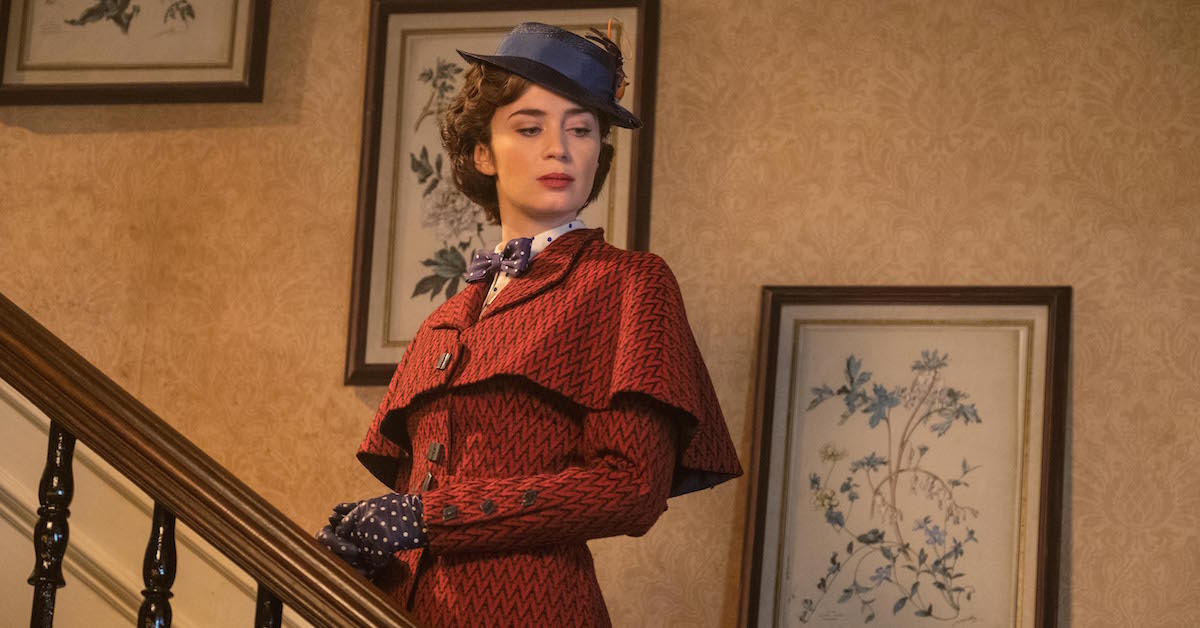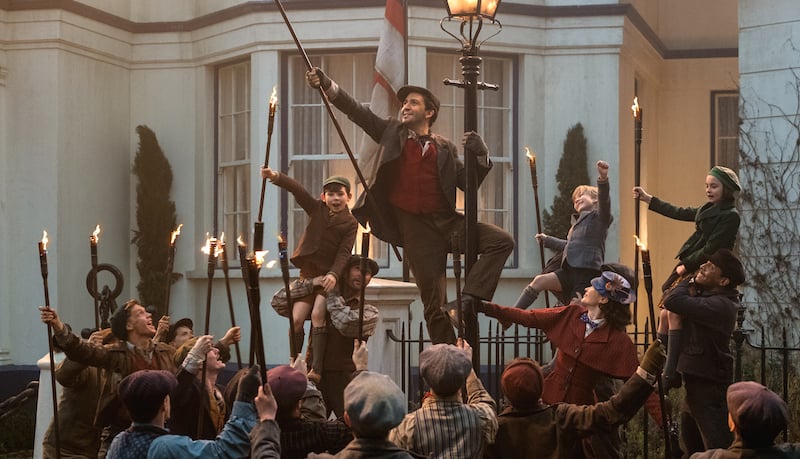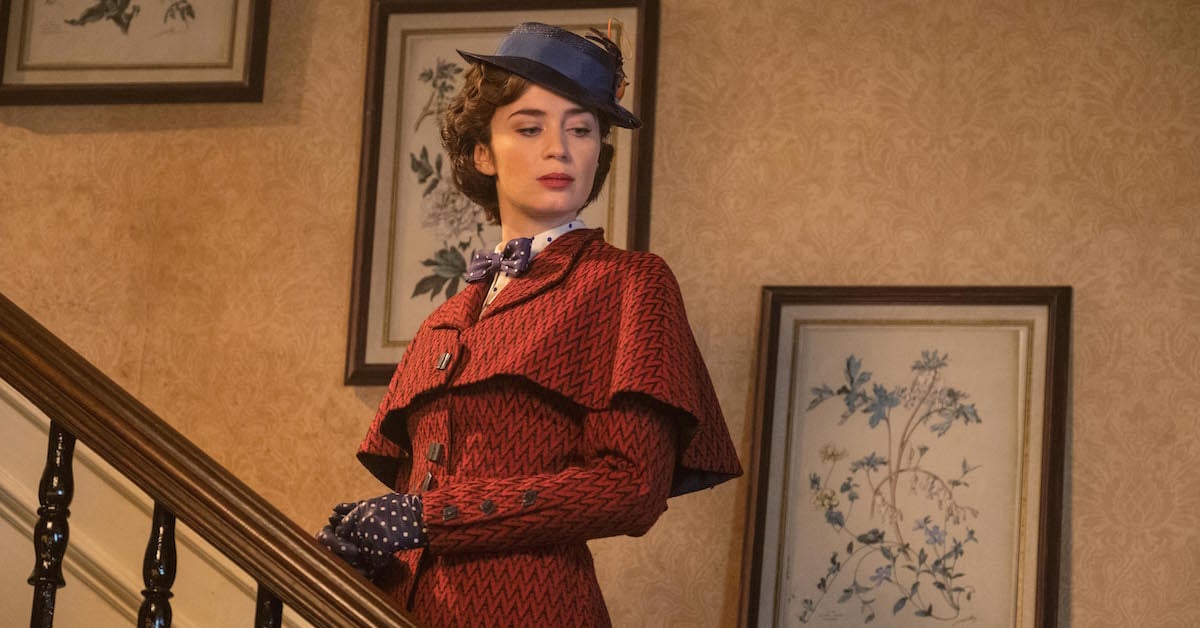 Enter the magical world of Mary Poppins Returns and hear about the level of detail put into the sound by Oscar®-nominated sound designer and supervising sound editor, Renee Tondelli.
Enter the magical world of Mary Poppins Returns and hear about the level of detail put into the sound by Oscar®-nominated sound designer and supervising sound editor, Renee Tondelli.
Over the course of her illustrious career Renee Tondelli has been nominated for an Oscar® for her work on Deepwater Horizon (2016) and received nearly a dozen nominations from BAFTA, AMPS, MPSE, and other esteemed organizations for her work on films like Into The Woods (2014), The Passion of the Christ (2004), and Memoirs of a Geisha (2005). We had the pleasure of having a very in depth discussion with Renee about her recent work on Mary Poppins Returns (2018), a sequel to the 1964 classic.
Warning: May contain spoilers.
There’s a kite that plays a very large roll in the introduction and in the ending of the film, could you talk a little bit about the sound of it?
With the kite we kept being told, "Don't bother doing sound for the kite because it's going to dramatically change since it's all CGI.” Eventually Eugene Gearty and I had a temp mix coming up and said to each other, "We have to have something for the kite. Let's just try some things out." Eugene went to work with Marko Costanzo from C5, and they had this huge block of parchment paper which had a crispy sound quality. Eugene held one end and Marko held the other, and they started moving it. We would give them directions like, "Slow it down, a little softer,” which ended up being this beautiful musical movement with the parchment paper recorded as a wild track. Eugene went back to cut it in and somehow it sunk-up perfectly, it was pretty profound how smoothly it laid in.
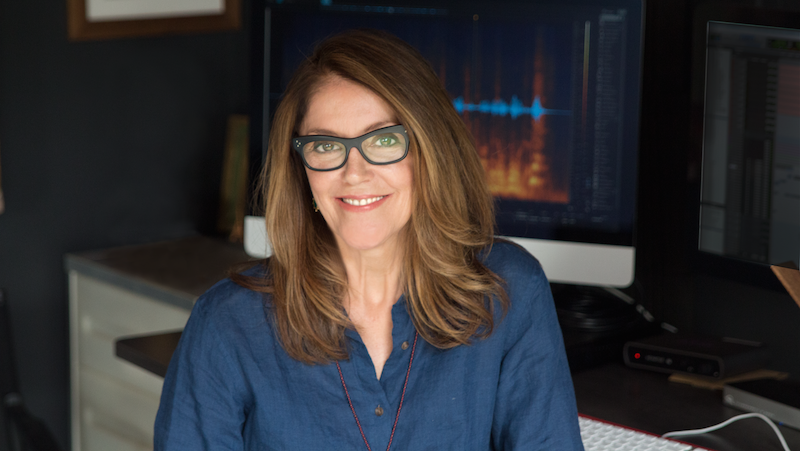
How did you go about creating the tonal quality of the Parrot Cane’s voice?
The voice of the parrot was Edward Hibbert who is a very wonderful actor. Rob Marshall was careful and specific about getting this particular voice, he wanted it to be upper-class and posh but a little mannered. As far as the EQ of it, we were going for an old school, vintage sound, like something from the 1950s or '60s similar to what they did at the time in Disney so it was a bit of a throwback.
The parrot itself was animatronic, with five guys working it behind the scene. One was in control of his eyes, one was the beak, one was his head, one was his neck, it was amazing what went into the build of this parrot. There was this animatronic motor on it that would run anytime the parrot was moving, so we had to be very cautious while working with it on-set. Simon Hayes, who is the most amazing production mixer did a sublime job capturing the cast’s dialogue without any intermixed motor noise.
"The biggest challenge is to make these songs come dramatically, effortlessly, and seamlessly out of the movie, out of the production. They are all climaxes to a particular scene, but you really have to serve that song. You can't just all of a sudden break into song because it would jar the audience."
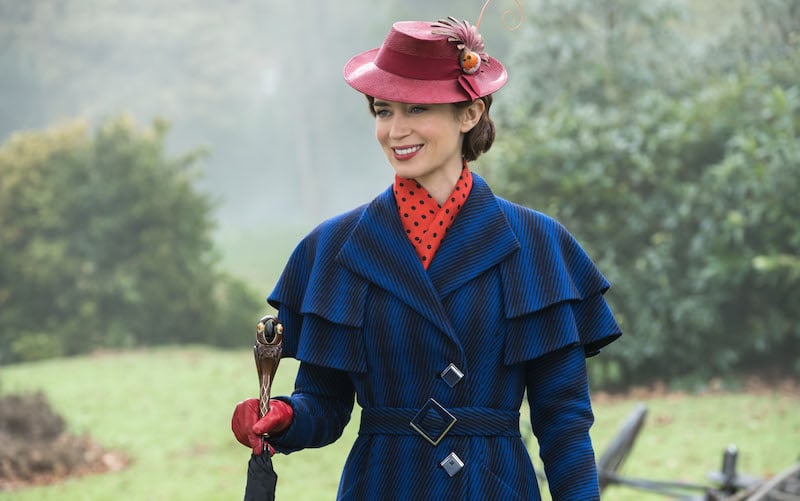
Did you use any sounds from the original Mary Poppins movie as a reference?
Since this really was a new movie, we approached every sound as a brand new sound and created a new soundscape for it that would work with what was happening on the screen that we were seeing. It is set in 1930’s London, which was the great slump, it was their Great Depression, a very dark and bleak time, and there wasn't a lot of hope. Our backgrounds and our soundscape started out very stark, without a lot of happy birds, no children laughing, because it was a sad time in London. As the film progressed and as Mary arrived, things became more hopeful and a little more joyous.
There is a bit of an homage to the first one with the sound of the wind when Mary first enters. In the original, the nannies are blowing away, then there's one last nanny holding on desperately, finally she gets blown away and then Marry Poppins walks in. It was sort of the same in this movie with the children. There's several personalities of the wind because it plays such a big part in the film and Eugene did a remarkable job with that. There’s everything from layers and layers of wind and tiny little leaves to huge gale gusts and arctic winds when they're up on the tower and the kite gets blown into the Wilkin's bank office.
How did you go about balancing the dialogue and the singing voices of the cast?
Musicals are very complicated and difficult to make right, and there’s a lot of ways you can do them that don’t work well. The biggest challenge is to make these songs come dramatically, effortlessly, and seamlessly from the scene. They are all climaxes to a particular scene, but you really have to serve that song. You can't just all of a sudden break into song because it would jar the audience.
We had to really weave and lace the dialog and the prerecords, the studio vocals, the ADR back and forth a lot to make the audience believe that that actually did happen in that room and in that moment. Rob takes the actors for two months and does what he calls “the camp” and they do rehearsals, much like a Broadway play where they really learn the songs on set. They are getting their muscle memory as they're doing the song, and because of course, all of Rob's films have a great deal of choreography, they have to learn that and they also learn how to sing while they're doing that. By the time they get in to do their prerecords and they're in a studio, they actually sing it with that same muscle memory, that same physicality that they learned on the set. It makes it wonderful when you put that into our tracks, because they're not just standing there in front of a microphone singing. We also use the same mics, we’re very careful about that, because each actor had specific mics that they used during the studio record.
There was a tremendous amount of collaboration on the dialog between, myself and Jennifer Dunnington who is our uber-musical supervising editor. The two of us were constantly reworking the vocals and fixing things. I would do a pass on sync. She would do it. We would go back and forth, so there was a lot of weaving going on to make a song sound like it really did have happen in that scene.
Two of the most (arguably) ambitious dance numbers in the film are A Cover Is Not The Book and Trip The Light Fantastic. How did you create a balance between the music and the sound effects during these dance numbers?
Traditionally in musicals people drop out backgrounds and just keep foley in the song, but you really do hear the difference when you take out the backgrounds. It was a struggle for Eugene and I to make sure that the backgrounds actually sat in the scene, supported it, hugged it, and gave the feeling that that existed at that moment.
The reason why a lot of the dance numbers came out so great was because we used the co-choreographers Joey Pizzi and Tara Hughes, and a team of dancers to help with the foley for those scenes. We went to a rehearsal stage for two days, they taught all these dancers the steps to all the songs, we then went to C5 record. It was really wonderful to have them because there were seeing things going on that we could not see visually. Tara would say, "No, at this point they do a finger snap." We wouldn't have known that if we didn't have the choreographers there. It became this beautiful orchestra of foley that we were able to record, and it really did become a major rhythmic element of the song.
In Trip the Light Fantastic we used pig iron, which are these crude, big, thick, iron pipes, that we laid next to the stone floor where the dancers would jump off and on because it represented the lamppost. Every time a different dancer went on a different part... sometimes you would do them together... they would hit the pipe at a certain point, and it would have a different ring off that would be really beautiful. Because their shoes and the sound pressure of that particular footstep sounds different from person to person, we had this elegant, almost musical tone to the lampposts. Then they would jump back on and do their steps on the slate, on the stone floor, different material depending on the scene and what we were trying to accomplish.
The amazing thing about the dancers is that they don’t stop, they only do complete and entire takes. When Rob does his choreography it's in several layers, it’s not just a bunch of people doing, the same thing. You have probably five or six layers and rows of dancers, and each one is doing a different syncopated rhythm. Some might be doing hand claps and snaps and pats, and the other ones are doing shuffles while another row is doing tumblers. There might be another one spinning on a lamp, yet they all maintain a syncopated beat.
How did you manage going back and forth between the fantasy and the real world? For example the animation sections and also anytime Mary Poppins is working her magic per se... What was done to keep that balance?
I really feel like Mary Poppins is magical realism, she’s a woman who happens to be very magical. The way we approached that was by dipping in and out of realism so to make sure it was always maintained in some fashion. Because everything is so intertwined (dialogue, sound effects, music), the lines had to be completely smudged between them so you never knew when one began and where one ended. But as far as the soundscape to it, we did a lot of that with foley and backgrounds.
In the bathtub sequence it was really fun to create these underwater elements and give them a lush “reverbed” environment that a lot of foley went in. To get it to feel like it had an underwater swimmy quality to the vocals, Rob had Emily sing it twice as fast and they filmed it twice as fast. She had to do this in-sync, in tune, twice as fast, and then he slowed it down so it would give it this sort of swimmy, dreamy, underwater tone.
The bowl sequence was a large endeavor for us because we had to figure out what it was supposed to sound like. What does it sound like to talk inside of a bowl? So we started doing impulse responses by hanging a microphone in the middle of several different bowls. We hit it with mallets and chips of broken ceramics and nails and all kinds of elements to get these different impulse responses. Then we took those and put them into Altiverb in our Pro Tool session. We fed all the dialog through that so it had this feeling like you were inside of a porcelain bowl because it had that particular sound to it.
When we got the music for the bowl scenes, the music editors said, "Oh, God. It's just that one tone, that one pitch is really clashing with the music.” so Jim Bruening went back in and pitched our impulse responses so that they worked beautifully with the music whenever it happened. You really felt like you were inside a bowl because that's one way to sell that set is that it sounds like they're in a bowl. The same thing with all the feet, we really spent a lot of time trying different shoes and surfaces. Andy Malcolm from Toronto, our team up there, did a lot of this for us. Every time someone walked, he would hit a porcelain sink with a mallet so it had a porcelain ring off, but it had the quality of a marble sound. Then, of course, each child had a different pitch, each person had a different pitch to their feet, and Eugene took those and did some wonderful reverbs and added that on top of it. After Eugene, Mike Keller, our amazing sound effects mixer, really took it and went into another level and expanded it. Everything was made of porcelain so even the steps of the carriage had the ring offs. The horse then had to be on porcelain, it was wonderful fun playing around with trying to make it how we wanted to make it sound.
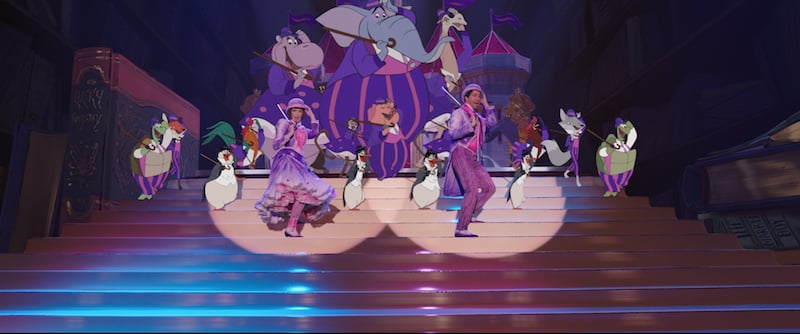
Still from "A Cover Is Not The Book" musical sequence
What was it like creating the soundscape for the animal environment of the tent in the animation section? What was the direction for the loop group like?
We kept hearing from the animators, "Oh, there's gonna be a lot of animals in there." They're going to be walking down, they’re going to be surrounded by animals, then they get to this outside of a tent,” which we never saw. We never even saw what the tent looked like until way later. We started to get pencil drawings in for things, then we ended up going inside the music hall which was empty again, it was just a green screen with the main characters. We were told there were going to be all of these different animals in there and that they also are coming to hear Mary Poppins. Sort of everyone knows except for the kids and Mary Poppins is sort of, "Argh, Me? I couldn't possibly do… B-flat major." She knows and she's been there before, and everybody recognizes Mary Poppins. They also sing along with her song in the chorus. To get all these animals to be able to speak and not be cartoony and have all these wonderful British Isle accents and be in a music hall and be really rowdy and be able to sing along with Mary, I had to go to London.
We had about 70 actors that we used, different ones every day. We shot for about seven days. It was really fun to go, "Okay, who wants to be the dandy fox?" Each character, each animal, had to have something to say. We did walla's, but we mostly did a lot of individual things, because we wanted it to poke through in reaction to the song, and they all had to sing of course. Mike, our musical supervisor, came to direct them. We had this deep bass who played the elephant, and he went way low. The flamingos way up on the top had these high, high sopranos, we had chickens and everybody was singing in their animal voice the real words but with this sort of persona of being a turtle. That was pretty fun. Then we mixed it all with this wild cacophony all working within the music and within the rhythms and in and out of the dialog. That was probably our most fun Atmos scene, because we could just put them all up in the rafters.
What was your greatest asset on a large scale production like this?
One of the best tools on this was our phenomenal team. We all collaborated in such a wonderful way, which is kind of rare. As sound editors we usually work by ourselves, in this film we just opened it up. If somebody had a better idea, go for it. What do you think about this? Me, Eugene, and the music department were constantly passing things back and forth to one another. How about this? That? Whenever we could make it better we did it, and we did it in the most remarkable way.


